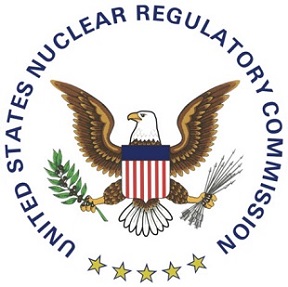

Spent Fuel Pool Neutron Absorber Degradation
K-effective Sensitivity Studies
Amrit D. Patel
NRR/DSS/SRXB/SFT
Any degradation should be modeled conservatively, consistent with the certainty with which the material condition can be established.
Source: DSS-ISG-2010-01
Overview
- Motivation
- Degradation studies
- Takeaways
Motivation
- GL 201X-XX: Monitoring of Neutron Absorbing Materials in Spent Fuel Pools (2014)
- IN 2014-09: Spent Fuel Storage or Transportation System Misloading (2014)
- IN 2012-13: Boraflex Degradation Surveillance Programs and Corrective Actions in the Spent Fuel Pool (2012)
- IN 2009-26: Degradation of Neutron-Absorbing Materials in the Spent Fuel Pool (2009)
- GL 96-04: Boraflex Degradation In Spent Fuel Pool Storage (1996)
- IN 95-38: Degradation of Boraflex Neutron Absorber in Spent Fuel Storage Racks (1995)
- IN 93-70: Degradation of Boraflex Neutron Absorber Coupons (1993)
- IN 87-43: Gaps in Neutron Absorbing Material in High-Density Spent Fuel Storage Racks (1987)
Motivation
Currently a wide range of degraded conditions among existing plants:
- Boraflex
- Carborundum
- Boral?
Potential for regulatory compliance issues that could lead to safety concerns
Questions:
- How much sub-critical margin actually exists in SFPs?
- How bad can it get?
- How much benefit to crediting higher burnup fuel?
- What's the minimum absorber needed at these higher burnups?
Assessment capability
Sensitivity studies
- Areal density varied between 0 and 0.022 g/cm2
- Degraded panels varied between 1 and 200
- PWR SFP:
- W17x17 OFA fuel
- Burnup at 37, 41, and 44 GWd/MTU
- Soluble boron between 0 and 2500 ppm
- BWR SFP:
- GE14 10x10 fuel
- Burnup at 12 (peak reactivity), 24, and 35 GWd/MTU
- Void fraction at 0.0 and 0.7
How much sub-critical margin actually exists in SFPs?
How bad can it get?
PWR case
How bad can it get?
BWR case
How much benefit to crediting higher burnup fuel?
Net k-eff change with degradation at higher burnup
(PWR, 44 GWd/MTU, 0 ppm solbor)
How much benefit to crediting higher burnup fuel?
Net k-eff change with degradation at higher burnup
(BWR, 35 GWd/MTU, 0 void fraction)
Assessment capability developed
Utility developed covering full range of degraded conditions to:
- Give a quick assessment of k-eff impact
- Give an idea of the value of increased burnup credit
- Support enforcement activities
- Perform confirmatory analysis
Assessment capability developed

Takeaways
Difficult to generically quantify reactivity effects (highly plant-dependent)
PWRs have to meet two regulatory limits:
- Potentially significant margin to cope with accidents (crediting soluble boron)
- For cases without soluble boron, absorber degradation management is limited
BWRs have to meet one regulatory limit:
- Employ a very limiting analysis => significant margin (but unquantified)
- Burnup credit past peak reactivity useful to counter significant absorber degradation
- Depletion is complex, but bounding approach could be taken
Assessment capabilities developed to support enforcement and licensing activities
References
The data from this presentation (including the scripts used to generate the various plots), and other resources related to this work, are accessible at https://github.com/AmritPatel/MADS.